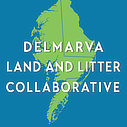Data

As a diverse forum of stakeholders, DLLC members work very hard to identify new data sources and to vet current data sources so that all members at the table are working from data they can all agree on. A prime example of this was a year-long effort of DLLC members to identify data that told the story around chicken farming on Delmarva. The outcome was our Exploring Chicken Farming on the Delmarva storyboard that provides a long-term look into trends across the industry and the region.
DLLC also utilizes and seeks to inform models being used by the Chesapeake Bay Program (CBP) that project pollution flow and loads, and simulate how changes to pollution controls, land use, atmospheric deposition and precipitation could impact the ecosystem, particularly water quality and living resources like fish and wildlife. According to the CBP, “These simulations are a valuable part of the decision-making for reducing pollution and meeting water quality standards through achievable, equitable and cost-effective approaches. The results of model simulations are never viewed as perfect forecasts, but serve as the Bay Program’s best estimates based on state-of-the-art, extensively peer-reviewed science (Chesapeake Bay Program Environmental Modeler – Backgrounder).”
The models are updated when new data is available, but some stakeholders question the accuracy of the model’s results. Because the land area within the Bay’s watershed is so large, it is difficult for the CBP to accurately track all of the management practices that are conducted on farms – unless the farmer uses state or federal cost-share funds. However, many farms implement conservation practices on their own. States and universities are constantly working to identify these practices so that they can be counted in the model and so that the agricultural community can be recognized for the work they are doing to reduce nutrients going into the waterways.
